Casuarinas beside Edgars Creek. 30.5 x 24 cm silver gelatin…
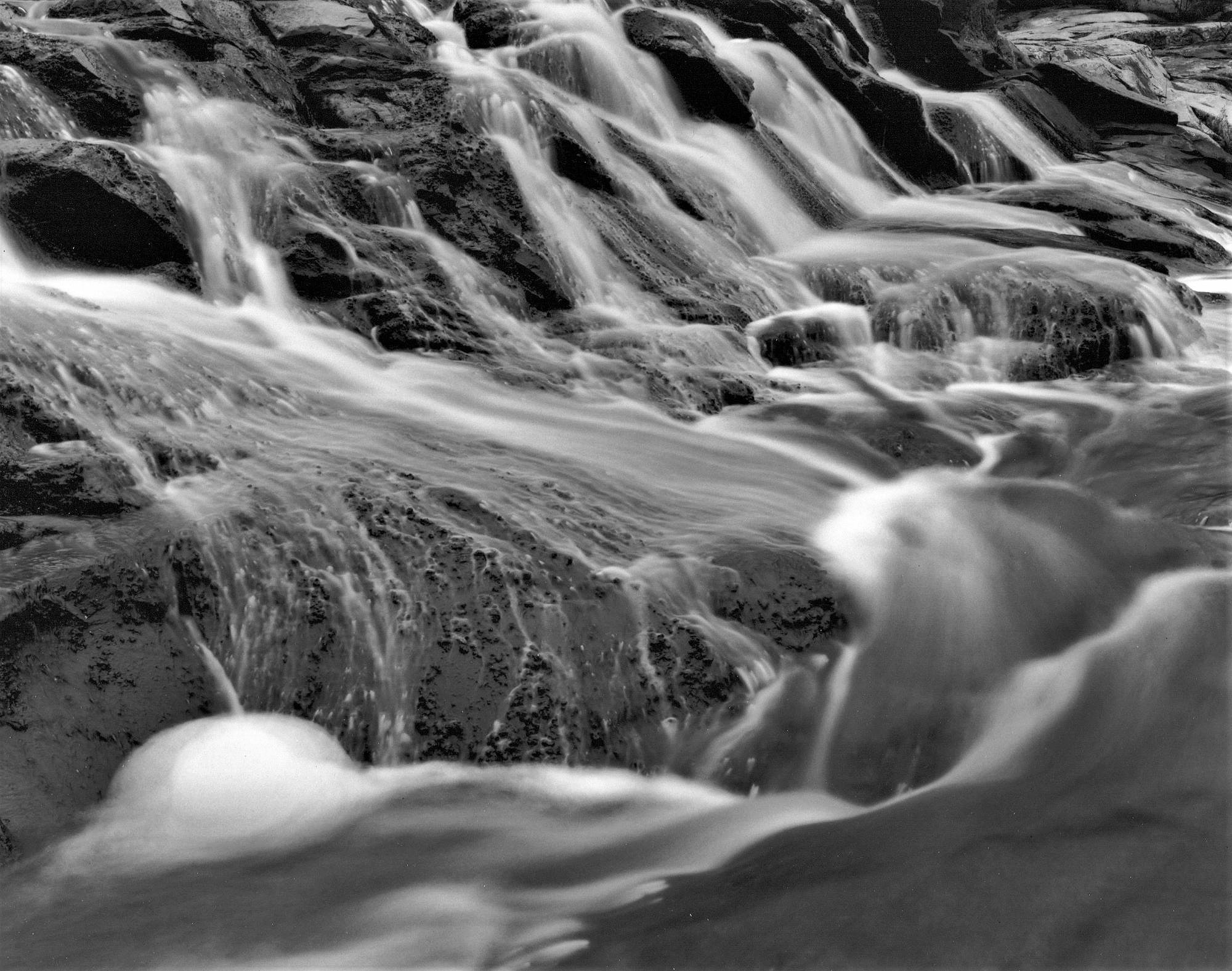
Just Add Water – Murray White
If you take a look at Victoria’s Grampians (Gariwerd) National Park on GoogleEarth you will see dominant sandstone ridges defining its length, broad slopes of eucalyptus forest throughout, and numerous boulder strewn outcrops. A few reservoirs and lakes dot the vicinity, but only on much closer inspection, will a skeletal structure of river and creek lines emerge from the khaki scrub. Yet last year having travelled there with a fellow large format enthusiast, all I photographed was water.
Admittedly there had been considerable rain in the weeks leading up to our trip, and we probably had thought to take advantage of the brimming waterways while the opportunity presented itself. However, I think that more than just serendipitous weather was at play here. Even on those elevated walks that should have inspired a broader vision, I still felt compelled to include rain filled ephemeral rock pools as part of my compositions.
What was going on in my head? Well it’s a bit scary if you really want to go there, but I think much of my attraction stems from a belief that water holds a privileged place in our landscape. I suspect that my view is not a unique one, and perhaps our society in general seems to attach a greater status to locations that feature water in some alluring way. For example water front cafes are becoming a national addiction, bushland walking tracks invariably lead us to the most verdant parts of their regional scope, and even outback travellers find dusty relief away from roads seemingly established as a means to only link waterholes (and not just the pubs!).
Given that our lives are preconditioned to accept water as an integral part of what it means to be human, it will come as no surprise that we wish to be around it and indeed to photograph it. There is an irony of sorts that we photographers in our haste to reach a popular waterfall or lake for instance, can sometimes overlook that beauty quietly oozing from the surrounding country. It seems that our focus on the (so called) real attraction is driven by a sense of anticipation, of satisfying expectation, although I think that this desire is also partly spurred on by needs even more primitive than that.
Water gratifies our every sense. Who could honestly say they don’t feel invigorated by the touch of the surf or the smell of the ocean? Why does the sound of a waterfall compel us to find its source? To watch the liquid of life tumble from the mountains and taste its pristine splash is to indulge in the most basic need we have.
Even our visual appreciation of water seems to originate from an instinctive, or at least organic base. Photographs locally blurred by moving water retain an almost universal appeal as our minds appreciate the scene and its overall flavour in a holistic sense. Other visually undisciplined elements showing movement can be met with much less than enthusiastic responses, but we happily allow water to be represented with qualities more akin to smoke. Clearly the recent fascination with big stopper filters and other structural forms of manipulation indicates that the limits to our acceptance are still to be reached.
Water’s reflective powers may be even more illusionary. We all gravitate to those lake or river scenes where intricate detail is mirrored onto a glossy surface. Photographs that provide us with this complete picture are often seen as vastly more photogenic than prints which reveal only the subject material responsible. It appears that our sense of the aesthetic is magnified many fold when even routine landscape is married to a reflected image on water.
Perhaps water really does connect with us spiritually, although maybe that link has been somewhat desensitised by our contemporary way of life. Our homes are in many cases well removed from the natural environment, and invisible pipes efficiently provide this life sustaining liquid on demand, then whisk away the residue as if it were never there. Could it be that a meaningful relationship with water demands physical interaction, and our instinctive need for closer contact at least partly explains why we insist on making multiple images of its existence?
I accept that I am fascinated by water in all of its forms, and I know that this attraction has as much to do with feelings of reverence and a desire to connect as any aesthetic consideration. Although I find all of our natural landscape to be captivating in its own way, for me the magic of water lives in a realm of its own. The accompanying images were taken in Grampians (Gariwerd) National Park after lengthy rain events late in 2021 and earlier in 2022. I used an Ebony RSW 4X5 view camera or Mamiya 7 for each of the FP4 negatives.
Main photograph above: LIQUID SKIN
The MacKenzie River skates over rocks in a spectacle of noise and unified movement. I stood my tripod mid stream and used a short telephoto lens to pull this composition together a little. I chose fairly tight framing to help isolate this scene from what may have been a background of just too much complexity.
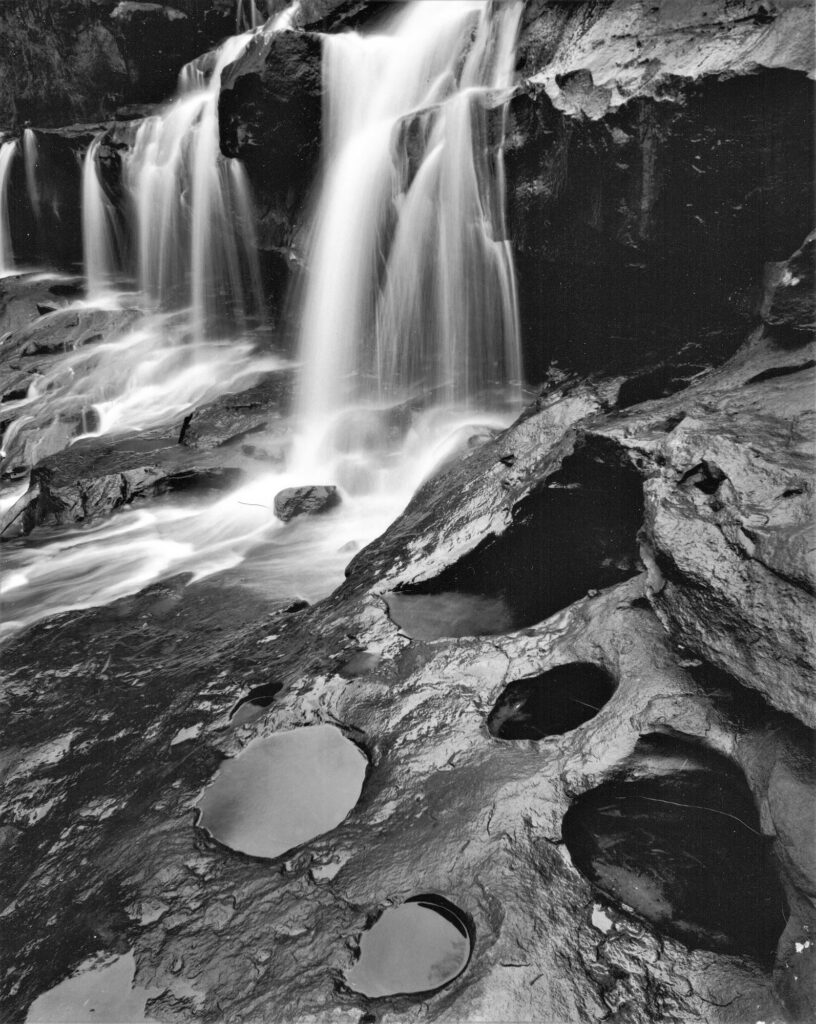


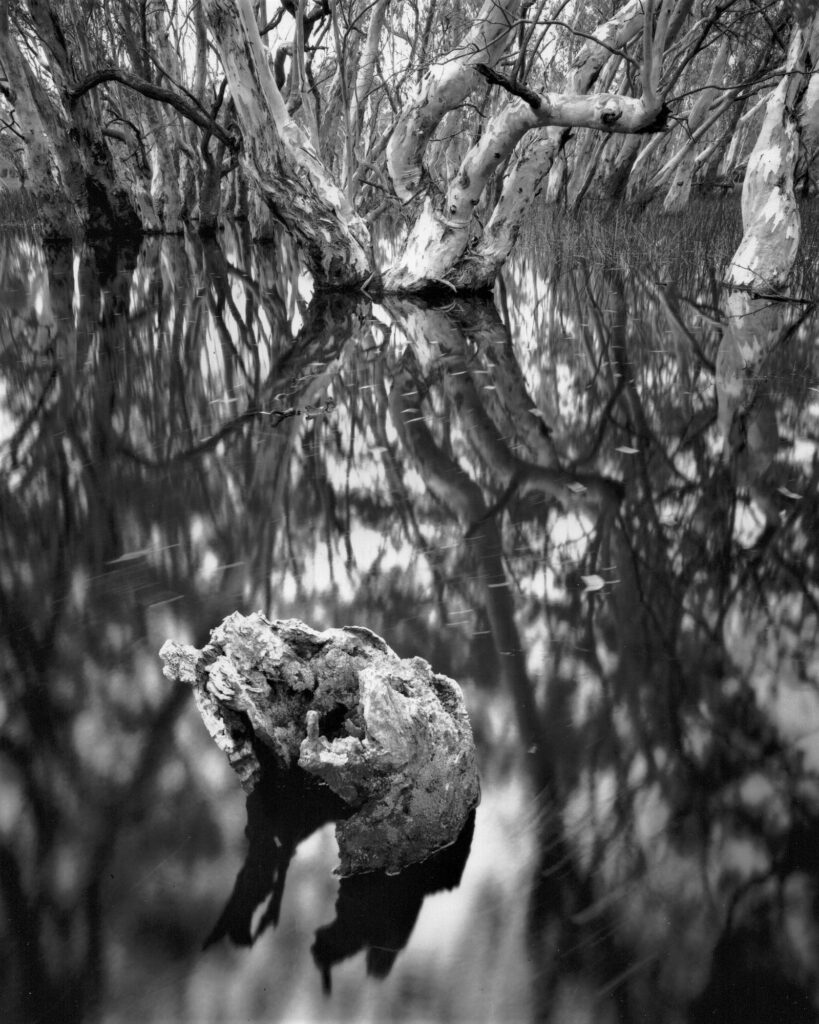
Next Post: Darkroom – David Rendle
Previous Post: Photographic Forum: Brought to Light

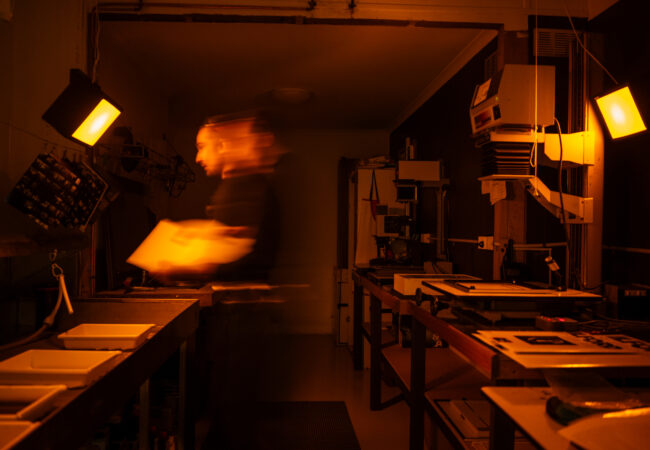

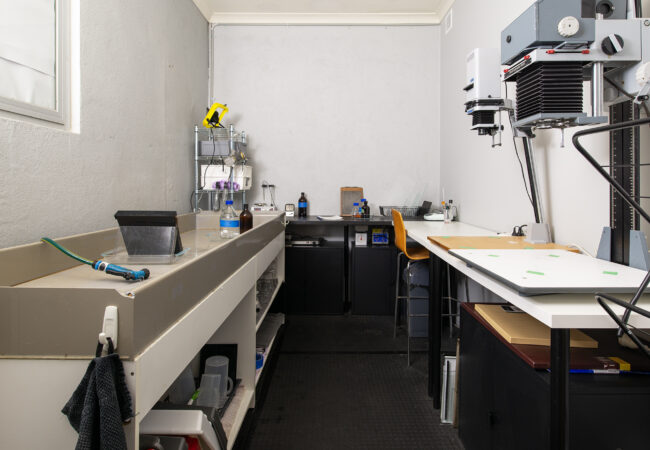
Great photos Murray! I love how long exposures reveal water patterns that are not immediately apparent.
Thankyou Greg, I agree with your thoughts and find much pleasure in seeing how time, movement and unpredictable tonal merges play out in the final print.